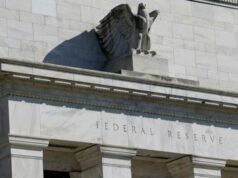Inflation slows to 5-month low in April
INFLATION slowed to a five-month low in April, as the decline in transport and the deceleration in other nonfood commodities offset the faster price adjustments in the heavily weighted food and non-alcoholic beverages, data from the Philippine Statistics Authority (PSA) showed.
April inflation eased to 2.2%, slower than 2.5% annual rate in March, and three percent in April 2019. This was also the lowest since November 2019’s 1.3%.
The April print was within the 1.9%-2.7% forecast range given by the Bangko Sentral ng Pilipinas (BSP) Department of Economic Research for the month. A BusinessWorld poll of 13 economists yielded a 2.1% median estimate for last month’s inflation.
Year to date, inflation settled at 2.6%, still within the BSP’s 2%-4% target band and above the revised two-percent forecast for the entire 2020.
Core inflation, which excludes volatile food and energy prices, likewise slowed to 2.8% from three percent in March. So far, it averaged 3.1% for the year.
The slowdown in headline inflation was brought by a further decrease in the transport index at 6.1% from the decline of 1.8% in March. According to the PSA, this was the lowest inflation recorded for the index since October 2015.
The PSA also noted slower annual increases in alcoholic beverages and tobacco (17.9% from 18% in March); clothing and footwear (2.6% from 2.7%); housing, water, electricity, gas, and other fuels (0.3% from 1.1%); health (2.8% from 2.9%); communication (0.3% from 0.5%); and restaurant and miscellaneous goods and services (2.4% from 2.6%).
“Obviously, the slowdown in the inflation rate for April can be traced to the slowdown in practically all business and economic activities,” University of Asia and the Pacific (UA&P) School of Economics Dean Cid L. Terosa said in an e-mail.
Meanwhile, the PSA reported preliminary figures for inflation as experienced by low-income households for March. That month, inflation for the bottom 30% of income households grew by 2.9%, faster than the 2.4% in March, but slower than 3.1% in April 2019.
The consumer price index (CPI) for the bottom 30% reconfigures the model basket of goods, putting a heavier weight on necessities such as food in order to reflect the spending patterns of the poor. This compared to the headline CPI which measures inflation as experienced by the average household.
The increase for this income segment may be explained by the food and non-alcoholic beverages index, which accelerated to 3.4% in April from 2.6% in March. The food alone index showed a similar trend.
In an e-mail, UnionBank of the Philippines, Inc. Chief Economist Ruben Carlo O. Asuncion said inflation in May could continue its downward trend, but noted price adjustments in succeeding months may be higher as firms gradually resume operations and that “local and international supply of essential goods and services… may face supply challenges.”
UA&P’s Mr. Terosa said he expects “prices to accelerate faster towards the end of the first semester, pushing inflation between 2.8%-3%.”
“In the second semester, a wave of spending and bottled up demand can buoy inflation beyond three percent by the end of the year,” he added, provided that the ECQ will be lifted and the spread of the coronavirus will be contained.
In a note to reporters, ING-Bank N.V. Manila Senior Economist Nicholas Antonio T. Mapa said he does not expect the BSP to cut policy rates further in the near term despite April’s slower inflation print.
“BSP has offloaded a hefty 125 bps (basis points) worth of rate cuts for 2020 and Governor [Benjamin E.] Diokno did hint at pausing momentarily to gauge the impact of previous rate cuts before acting further. We expect only a 25 bps policy cut if ever BSP opts to ease further as the policy rate edges closer to BSP’s own inflation forecast of 2.2% for the year,” he said.
On the other hand, Nomura economists Euben Paracuelles and Rangga Cipta expect a “still-significant monetary easing ahead,” saying that the central bank still has policy space to respond to the deterioration in the Philippine economy’s growth outlook brought by the pandemic.
“We still see a 200-bp cut in the reserve requirement ratio to 10% as BSP’s next move, in line with its efforts to ensure sufficient liquidity conditions in the banking system and support the sectors hardest hit by the outbreak and the resultant suspension of economic activity,” they said in a research note.
“We also continue to forecast an additional 75-bp of policy rate cuts, which would take the policy rate to 2%, possibly all delivered within [the second quarter.],” they added.
JPMorgan Chase Bank NA Singapore Branch Economist Nur Raisah Rasid also expects the BSP to carry out rate cuts.
“Amid rising growth concerns, the slower underlying inflationary trajectory opens room for further easing. Thus, we recently added a 25-bp policy cut, beyond the 25-bp penciled in for this quarter, bringing the end-2Q20 RRP rate to 2.25%,” she said in a separate note.
The BSP cut rates to record lows in an off-cycle meeting on April 16 in a bid to cushion the adverse effects of COVID-19 on the economy. Following this, the BSP’s Monetary Board canceled its scheduled policy meeting on May 21.
Its next rate-setting meeting is on June 25.
In a mobile phone message, BSP’s Mr. Diokno reiterated the central bank’s support for “urgent and carefully coordinated measure” with other government agencies to mitigate the spillover effects of the pandemic on people and businesses.
“In addition to the monetary policy actions that have been announced, the BSP stands ready to deploy any available measures in its toolkit as we continue to assess the impact of coronavirus pandemic on the domestic economy,” he said. — Jobo E. Hernandez




